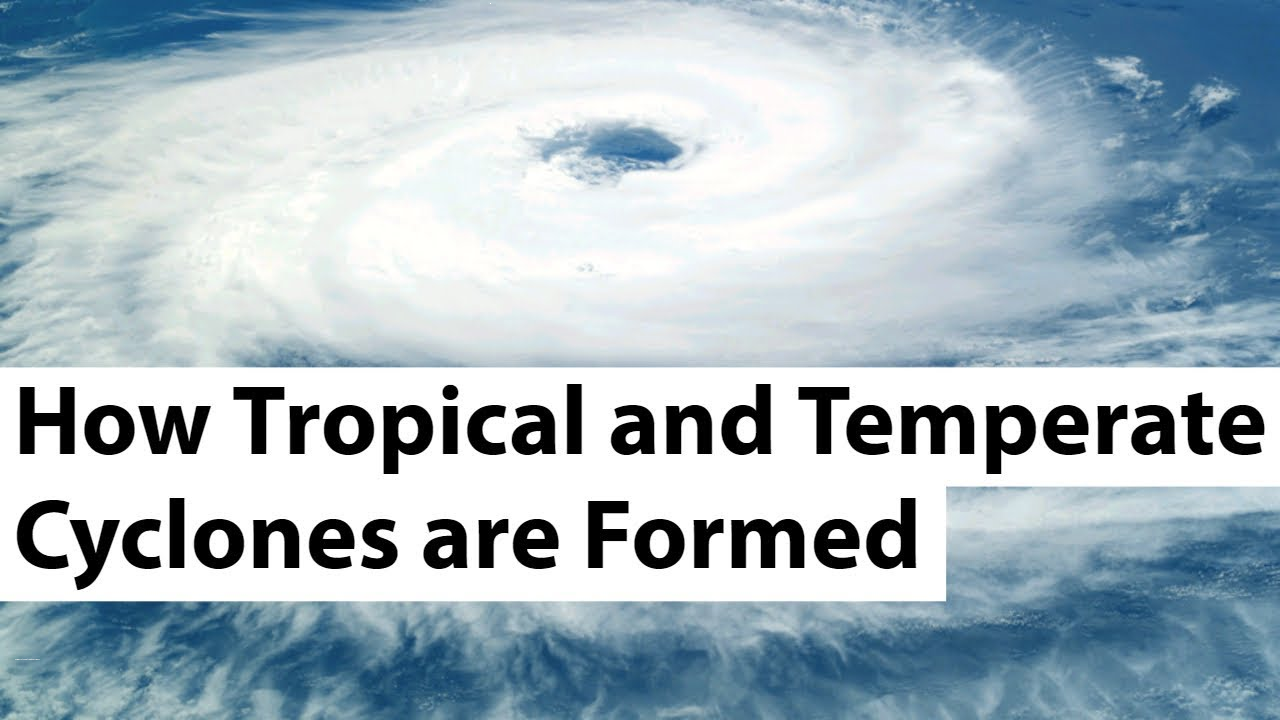Temperate and tropical cyclones
Temperate and tropical cyclones are two of the most severe weather events that can occur on the planet. These storms can cause significant damage to property and lead to loss of life. In this article, we explore the key concepts of temperate and tropical cyclones, the factors that influence their formation, and their importance for understanding global climate patterns.
What are Temperate Cyclones?
Temperate cyclones, also known as extratropical cyclones or mid-latitude cyclones, are low-pressure systems that form in the mid-latitudes. These storms are formed by the interaction between cold polar air and warm tropical air.
Temperate cyclones are characterized by a front, which is a boundary between the cold and warm air masses. The movement of the front and the rotation of the Earth create the counterclockwise rotation of the cyclone in the northern hemisphere and the clockwise rotation in the southern hemisphere.
Factors that Influence Temperate Cyclones
Temperate cyclones are influenced by a range of factors, including:
- Temperature Differences: The temperature difference between the cold polar air and the warm tropical air is a key factor in the formation of temperate cyclones.
- Coriolis Effect: The Coriolis effect, which causes air to deflect to the right in the northern hemisphere and to the left in the southern hemisphere, influences the movement and rotation of temperate cyclones.
- Prevailing Winds: The prevailing winds in a region can affect the movement and rotation of temperate cyclones.
- Topography: Mountain ranges and other topographic features can affect the movement and rotation of temperate cyclones.
What are Tropical Cyclones?
Tropical cyclones, also known as hurricanes or typhoons, are low-pressure systems that form over warm tropical oceans. These storms are characterized by strong winds, heavy rainfall, and storm surges.
Tropical cyclones are formed by the interaction between warm, moist air and the ocean’s surface. As the warm air rises, it forms a column of low-pressure that can intensify and form a tropical cyclone.
Factors that Influence Tropical Cyclones
Tropical cyclones are influenced by a range of factors, including:
- Ocean Temperature: The temperature of the ocean’s surface is a key factor in the formation and intensification of tropical cyclones.
- Coriolis Effect: The Coriolis effect influences the movement and rotation of tropical cyclones.
- Atmospheric Stability: The stability of the atmosphere can affect the formation and intensity of tropical cyclones.
- Wind Shear: Wind shear, or changes in wind speed or direction with altitude, can affect the formation and intensity of tropical cyclones.
The Importance of Temperate and Tropical Cyclones
Temperate and tropical cyclones can have significant impacts on weather patterns and climate conditions across the planet. These storms can cause significant damage to property and lead to loss of life. By understanding the formation and impacts of these storms, scientists can work to predict changes in weather patterns and develop strategies for mitigating the effects of severe weather events.
Impacts of Temperate and Tropical Cyclones
Temperate and tropical cyclones can have significant impacts on weather patterns and climate conditions across the planet. These storms can cause significant damage to property and lead to loss of life. For example, Hurricane Katrina, which struck the United States in 2005, caused over $100 billion in damage and resulted in over 1,800 deaths.
Changes in the frequency and intensity of temperate and tropical cyclones could also have significant impacts on global climate patterns. For example, changes in the intensity and frequency of tropical cyclones could alter the distribution of heat and moisture across the planet, leading to changes in global climate
Climate Change and Temperate and Tropical Cyclones
Climate change is expected to have significant impacts on the frequency and intensity of temperate and tropical cyclones. As global temperatures continue to rise, it is likely that the intensity and frequency of tropical cyclones will increase. Additionally, changes in temperature patterns could lead to changes in the frequency and intensity of temperate cyclones.


